Corpus of the Inscriptions of Campā
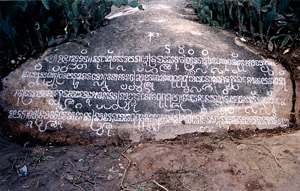
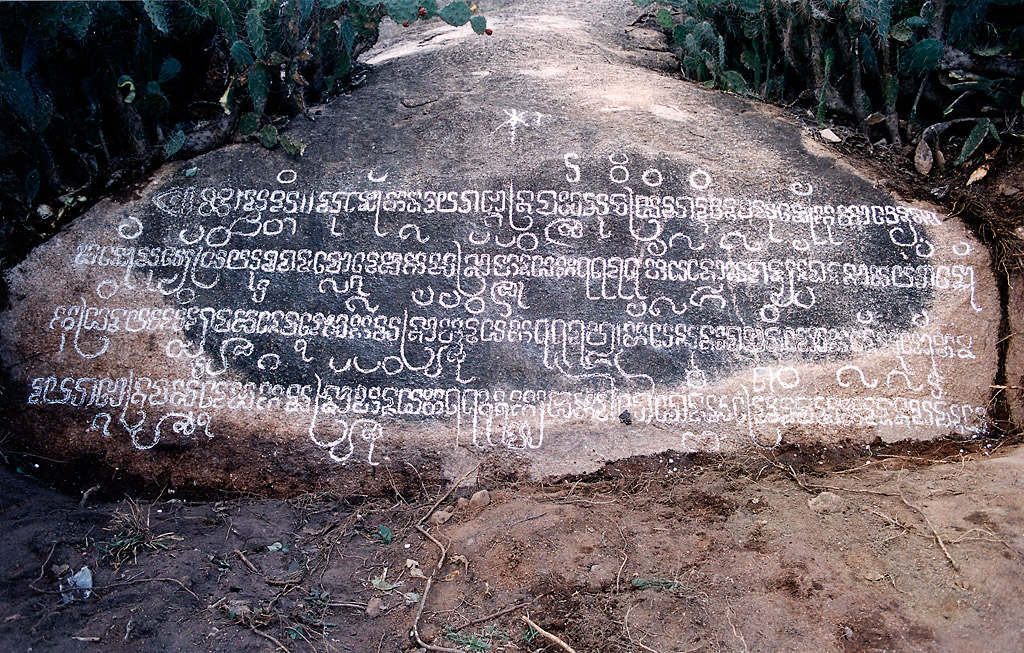
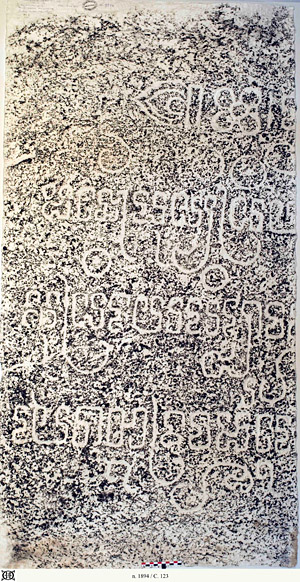
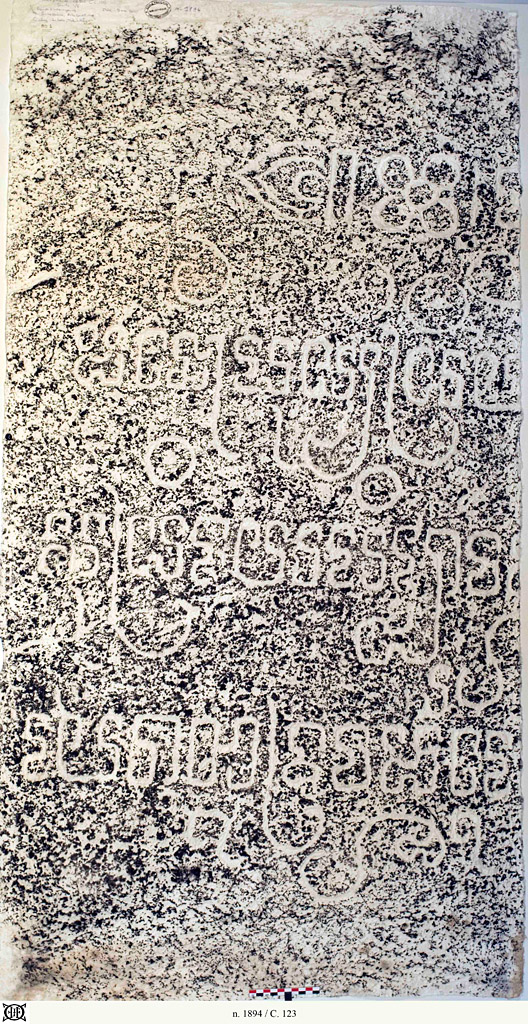
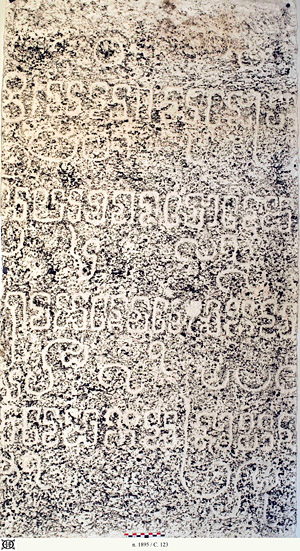

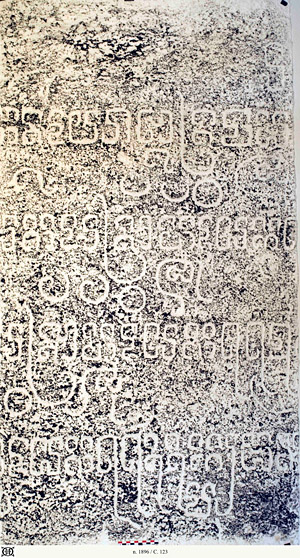

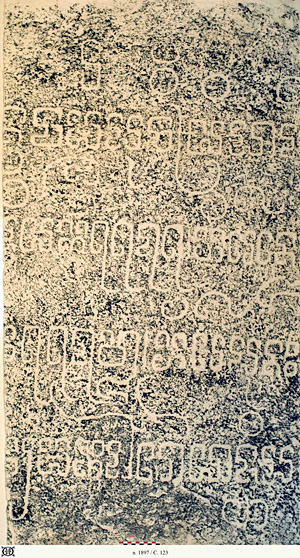
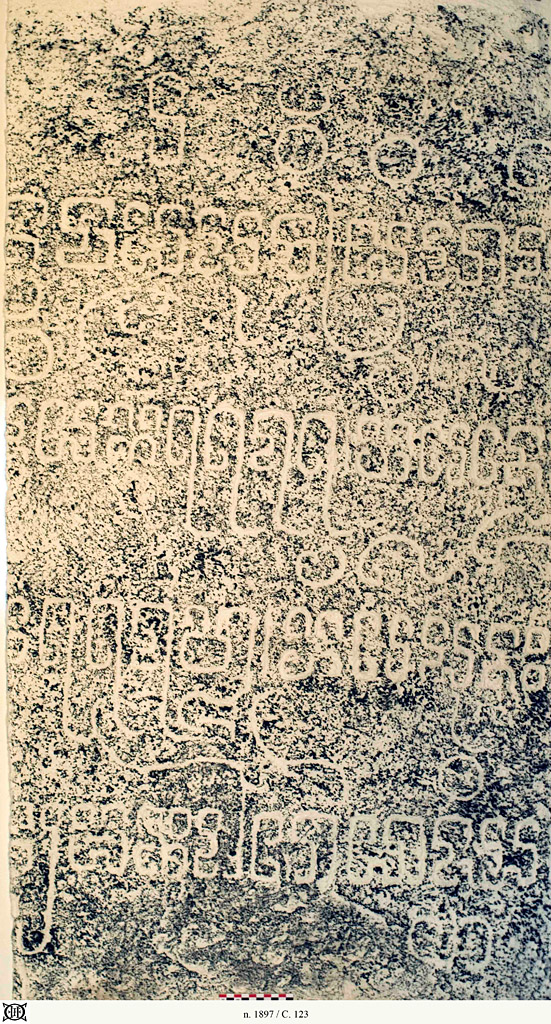

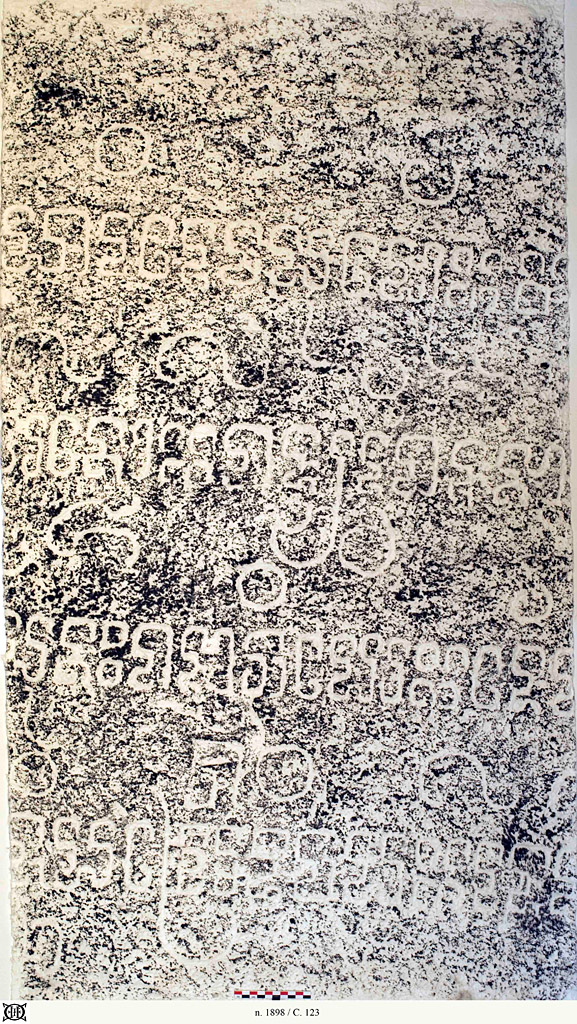

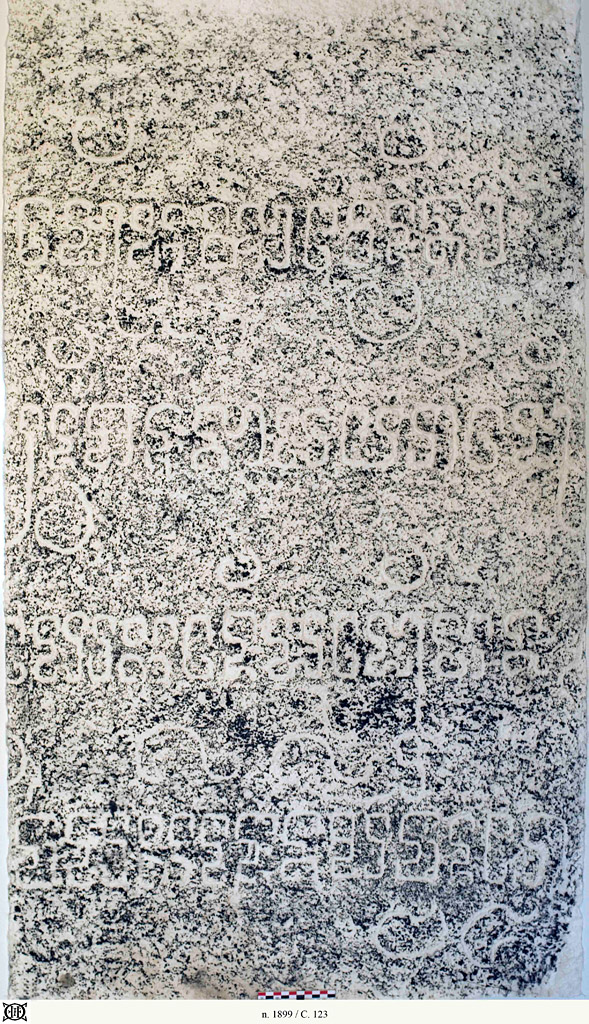
C. 123 Rock inscription of Cà Đú (Kanduk)
Please note: you are reviewing a preprint version of this publication. Contents here may change significantly in future versions. Scholars with specific interests are urged to consult all cited bibliography before using our texts and translations or drawing other significant conclusions.
Support Natural outcrop of rock (possibly granite); inscribed surface, measuring h. 111 cm × w. 348.
Text Four lines on one face written in Old Cam.
Date 1188 Śaka (1266/7 CE).
Origin Settlement of Cà Đù (Trấn Haỉ, Ninh Haỉ, Ninh Thuân, Vietnam).
This inscription was found before 1888, when it was first mentioned in the literature (Bergaigne 1888: 96-97), and attributed to the site of C. 17 (Đá Nẻ, called Batau Tablah in Cam), where it is not actually found. The misattribution to Đà Nẻ/Batau Tablah was repeated in Aymonier 1891: 57, with the added (false) suggestion that it is engraved above C. 17, on the same rock. The same information was repeated by Parmentier 1909: 73, with reference to Aymonier. The inscription was inventoried under the number C. 18 by Cœdès 1908: 41. Its actual site was (re)discovered in 1912, but the inscription found at this site in that year was misunderstood as an identical copy of the non-existent inscription of four lines at Đà Nẻ/Batau Tablah. See the report by Parmentier 1918: 575:
On this basis, an oblique reference was made to “Nai” in Finot 1915b: 51, and a separate entry was made for this inscription of Cà Đù (Cam: Kanduk) in Cœdès 1923: 28-29 (whence in Golzio 2004: 190). The error in the inventory was identified and explained in ECIC III: 467. The entry C. 18 is henceforward cancelled, and the inscription it denoted will be denoted only as C. 123.Le R. P. Durand a découvert en 1912 une inscription au pied du versant S.-E. de la montagne de Kadu au S.-S.-O. de la lagune de Nai. Elle a 3,20 × 1,10 et paraît en tout une réplique de l'inscription de Batău Tablaḥ (cf. I. C., I, p. 73).
Edition(s) Translated without publication of text in Aymonier 1891: 57-58; whence Majumdar 1927: 216-217 and Golzio 2004: 189. The present edition and translation after ECIC III: 470-472.
Facsimiles
- Estampage: BnF 395 bis
- Estampage: EFEO 11
- Estampage: EFEO n. 1894
- Estampage: EFEO n. 1895
- Estampage: EFEO n. 1896
- Estampage: EFEO n. 1897
- Estampage: EFEO n. 1898
- Estampage: EFEO n. 1899
The following text was edited by Arlo Griffiths and Amandine Lepoutre.
4 pasraum̃ ◇ papraum̃ Aymonier. Aymonier's reading is inferred from his translation. The estampage favors reading sr rather than pr, and a form derived from the base sraum̃ (Aymonier & Cabaton 1906: 497: “vivre, demeurer, sauver”) seems to fit better in the context (since jīva means 'life, spirit' in Sanskrit).
Translations
English
Hail! The P.P.T.R. Indravarman, prince Śrī Harideva P.P.K., when he bore the name milord P.P.L. Śrī Heir Apparent, had not yet (vloṁ) gone to take Panrāṅ, in order to enjoy it (tmum̃). In 1171 Śaka, it came to pass (tam̃l) that he claimed the kingdom. Bearing the royal name of Y.P.K. Śrī Jaya Siṁhavarmadeva, he went to take Panrāṅ, in order to enjoy it, in 1179 Śaka. The royal consecration took place later (punaḥ), and he became P.P.T.R. Indravarman, “He who had gone to take Panrāṅ, in order to enjoy it”, in 1188 Śaka. Forgiveness, grace, peace. Enlivening the spirit, without carrying out all the punishment.
French
Salut ! Le P. P. T. R. Indravarman, prince Śrī Harideva, P. P. K., lorsqu’il portait le nom de P. P. L. Śrī Dauphin, n’était pas encore (vloṁ) allé s’emparer de Panrāṅ, pour en jouir (tmum̃). En 1171 śaka, il se passa (tam̃l) qu’il réclama le royaume. Portant le nom royal de Y. P. K. Śrī Jaya Siṁhavarmadeva, il alla s’emparer de Panrāṅ, pour en jouir, en 1179 śaka. La consécration royale se passa plus tard (punaḥ), et il devint P. P. T. R. Indravarman, “celui qui était allé s’emparer de Panrāṅ, pour en jouir”, en 1188 śaka. Clémence, grâce, paix. Revivifiant l’esprit, sans effectuer toutes les punitions.
Secondary Bibliography
- Finot 1903: 640.
- Finot 1915b: 51.


